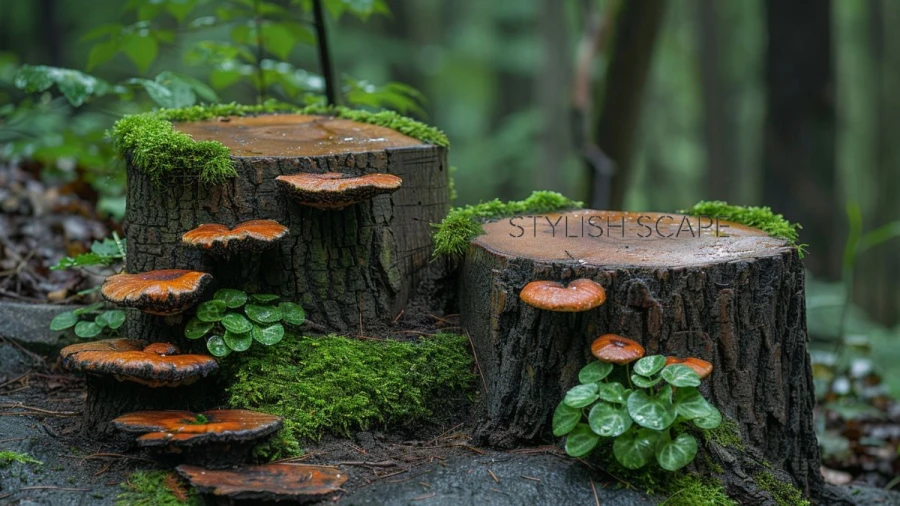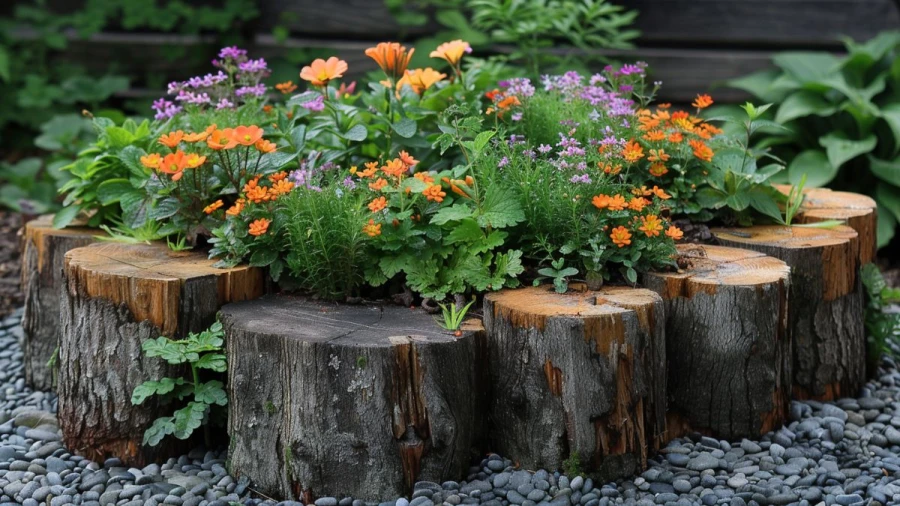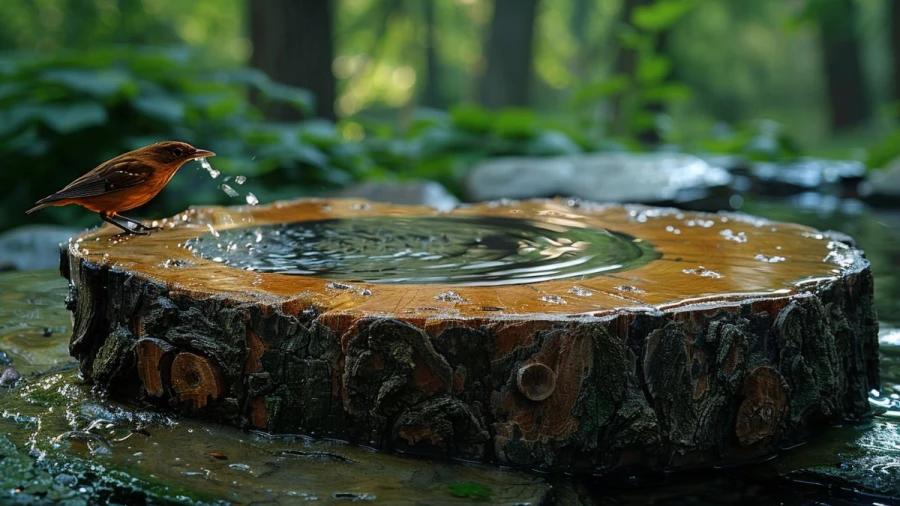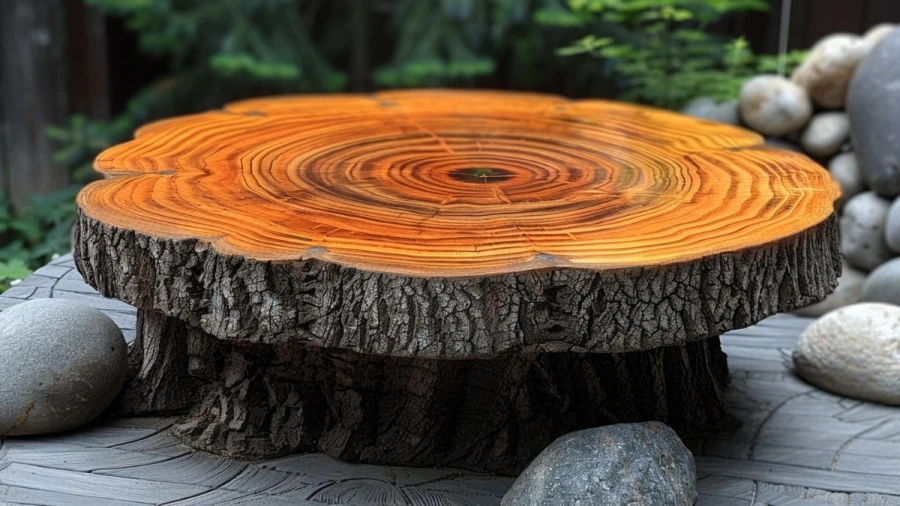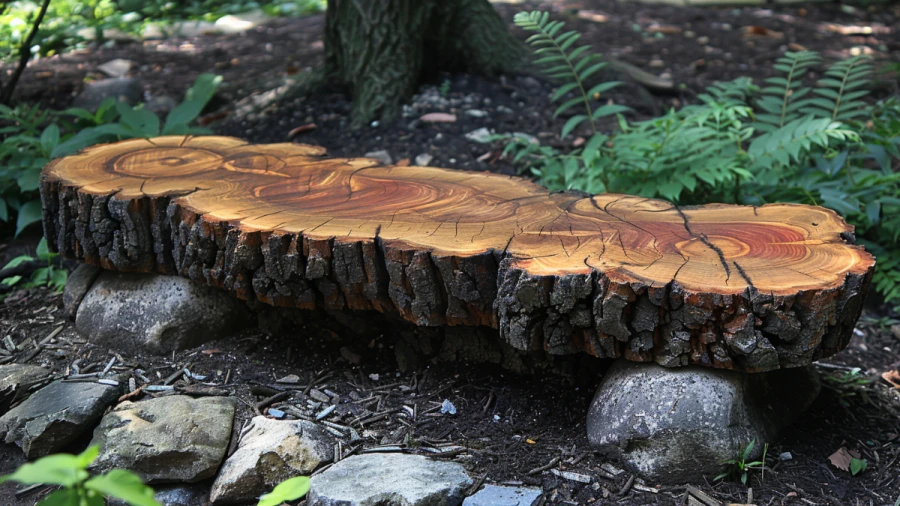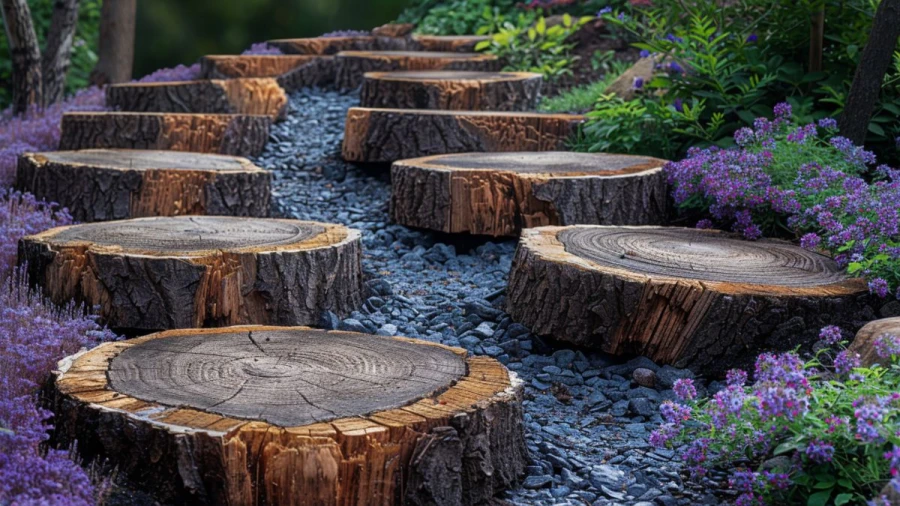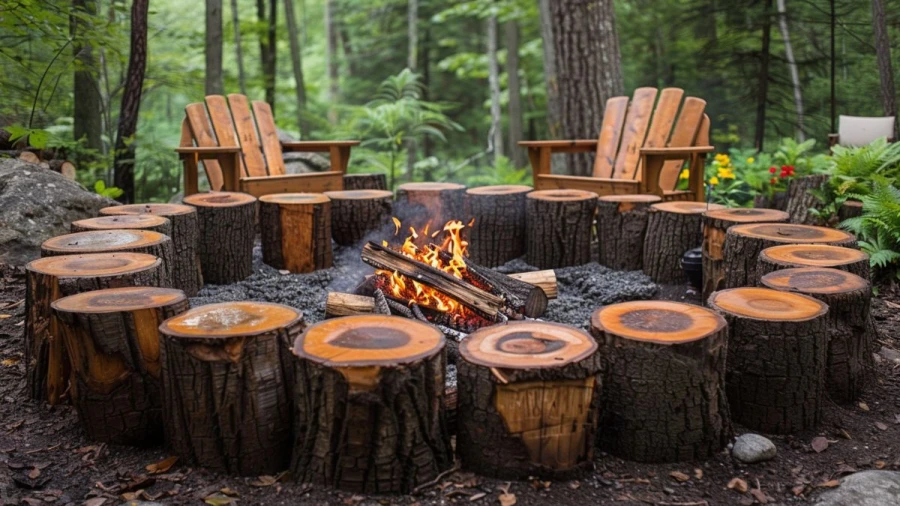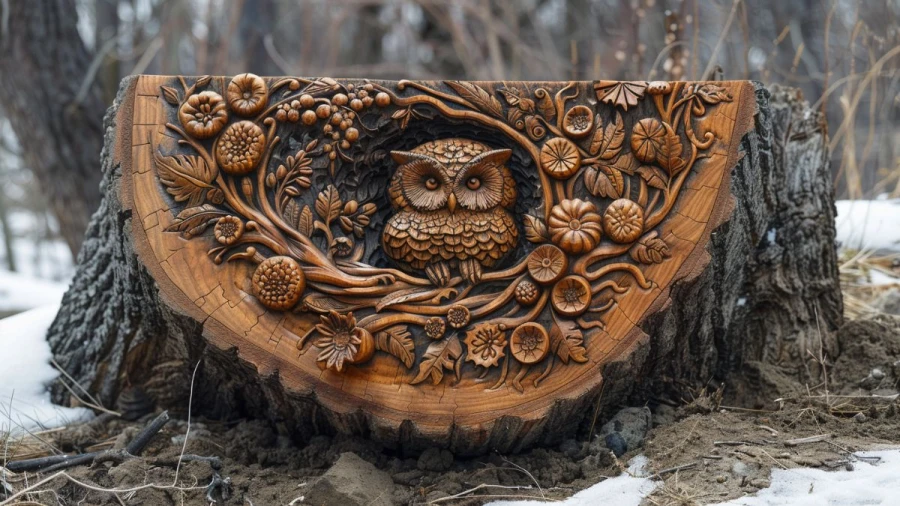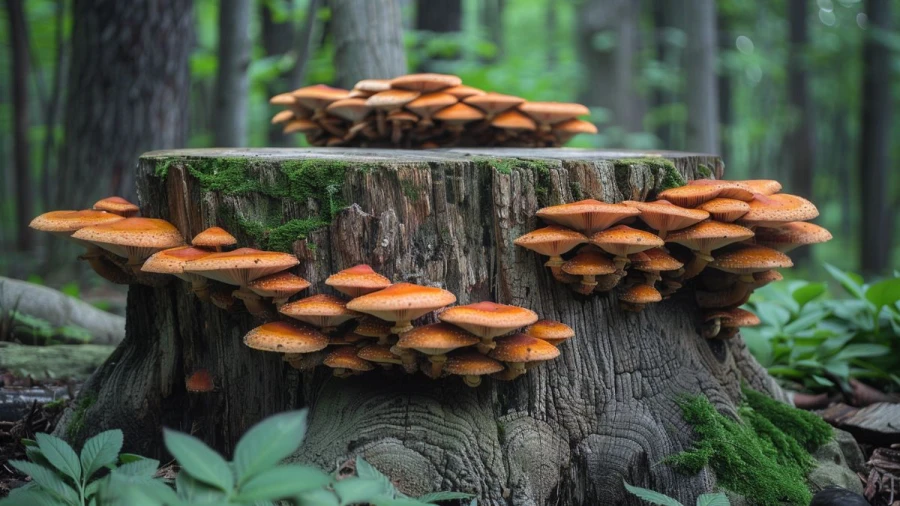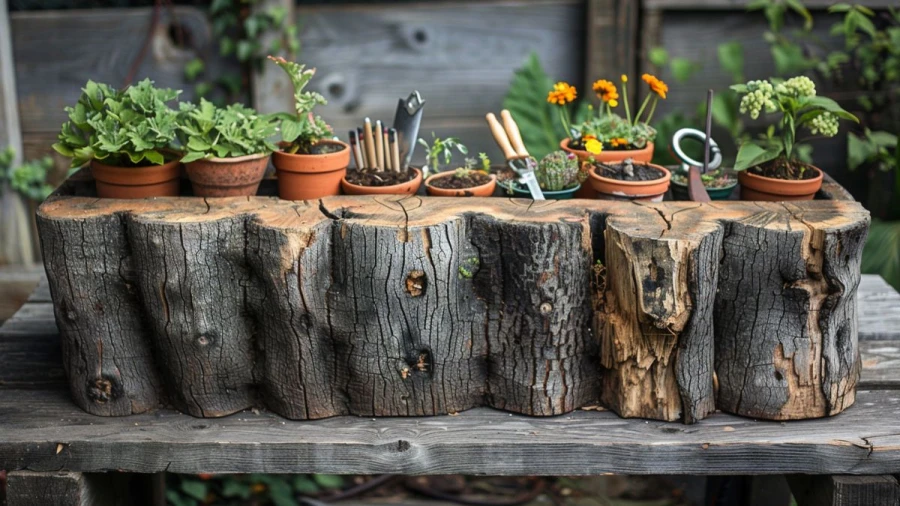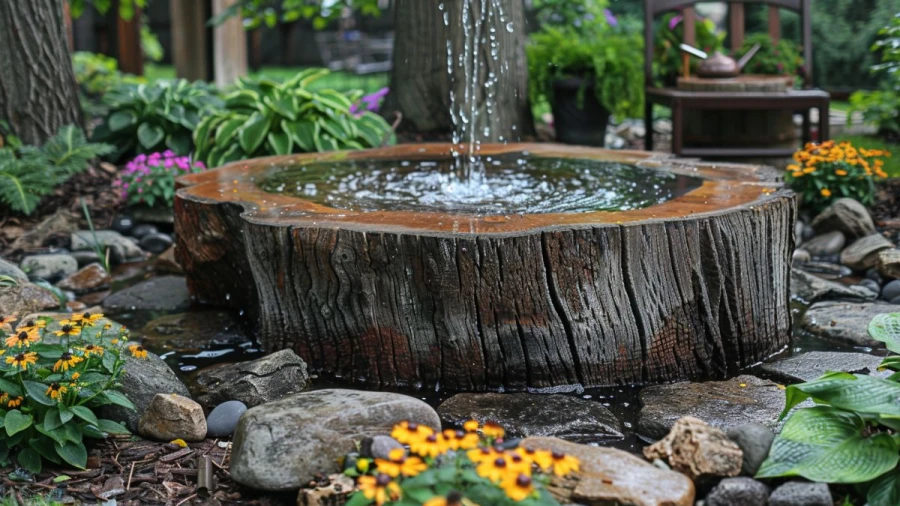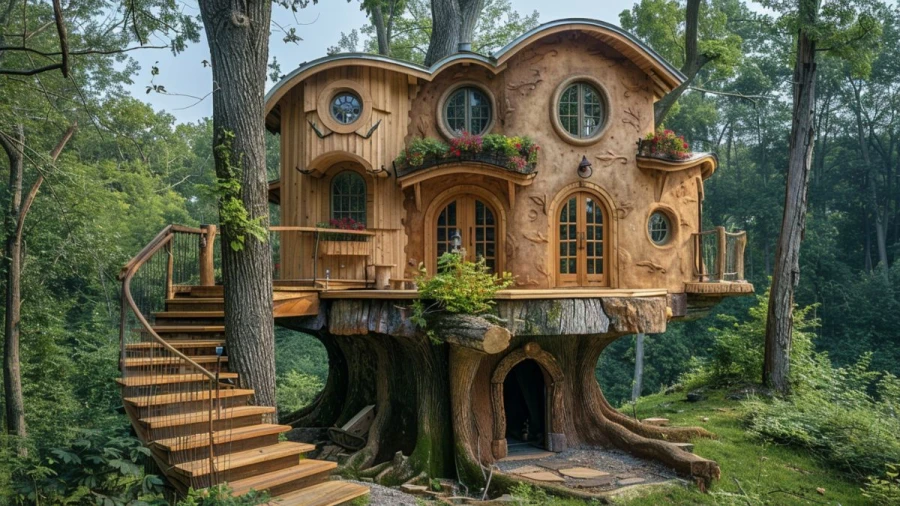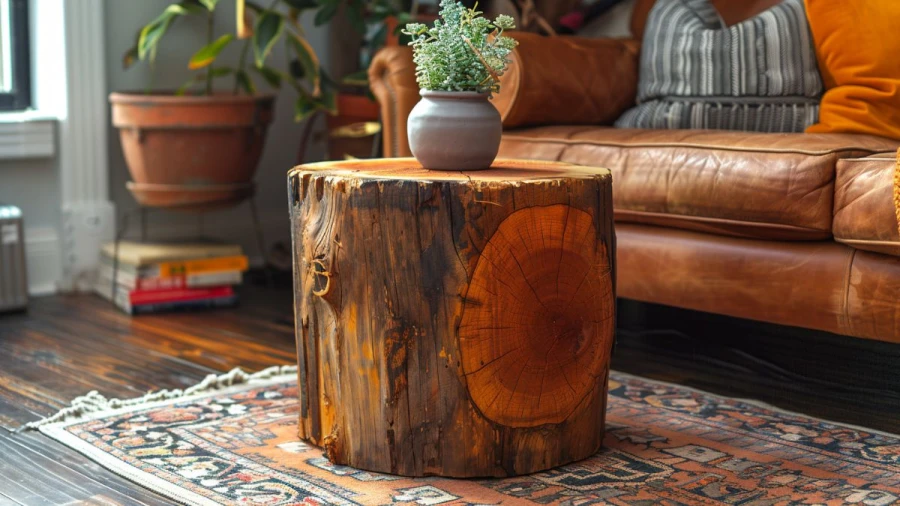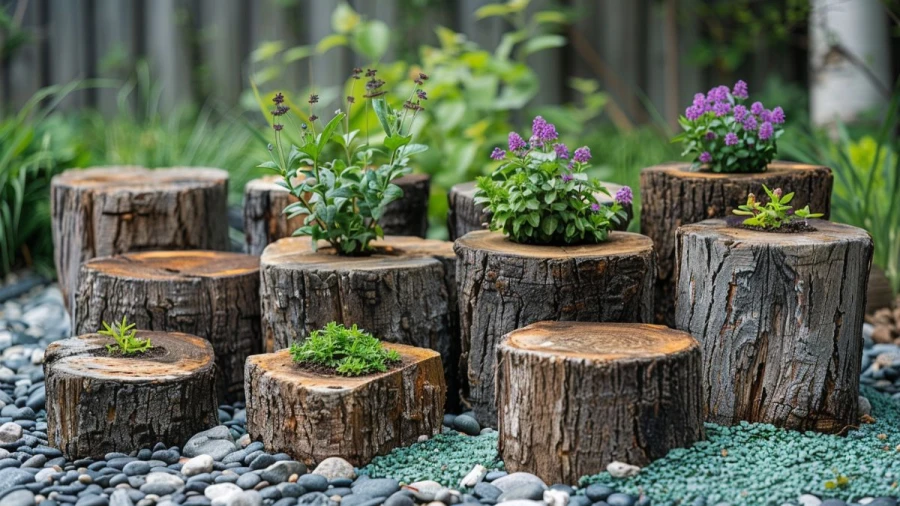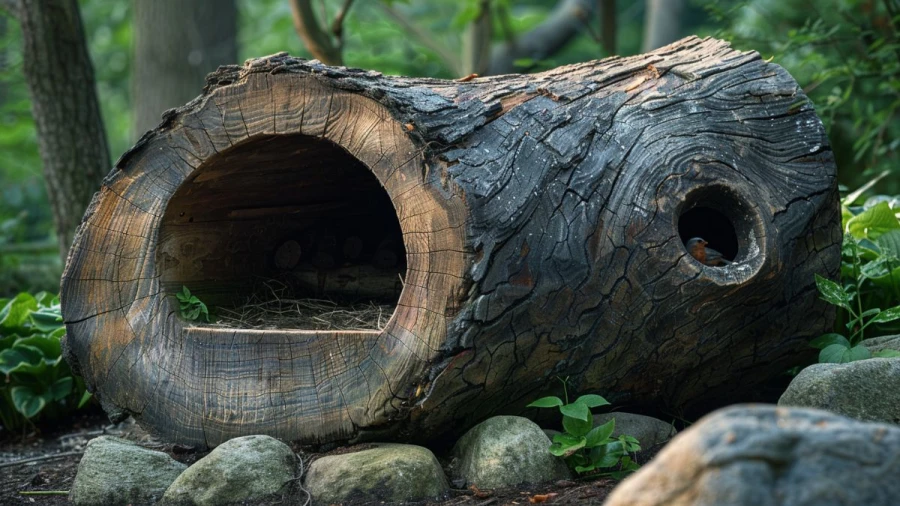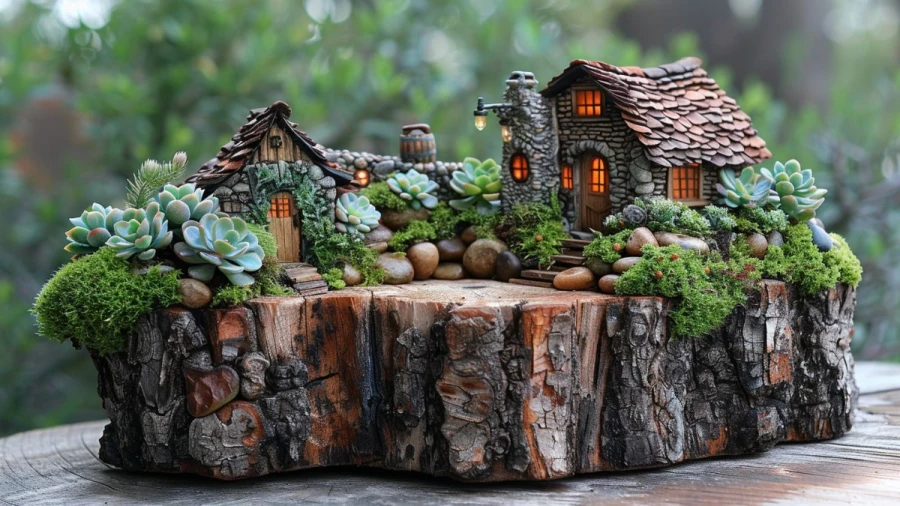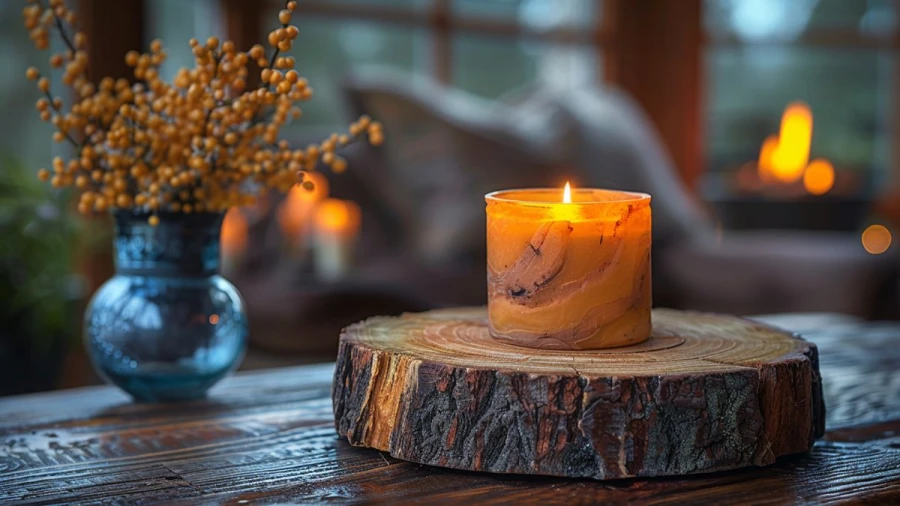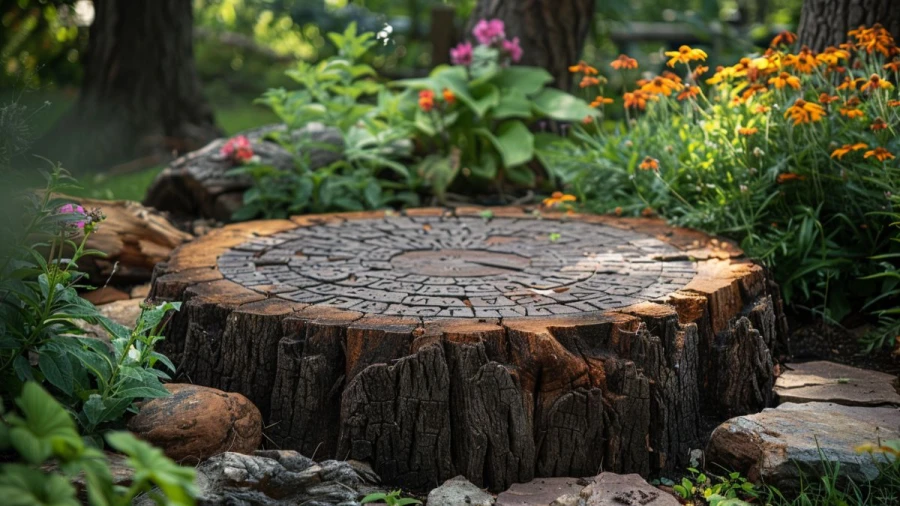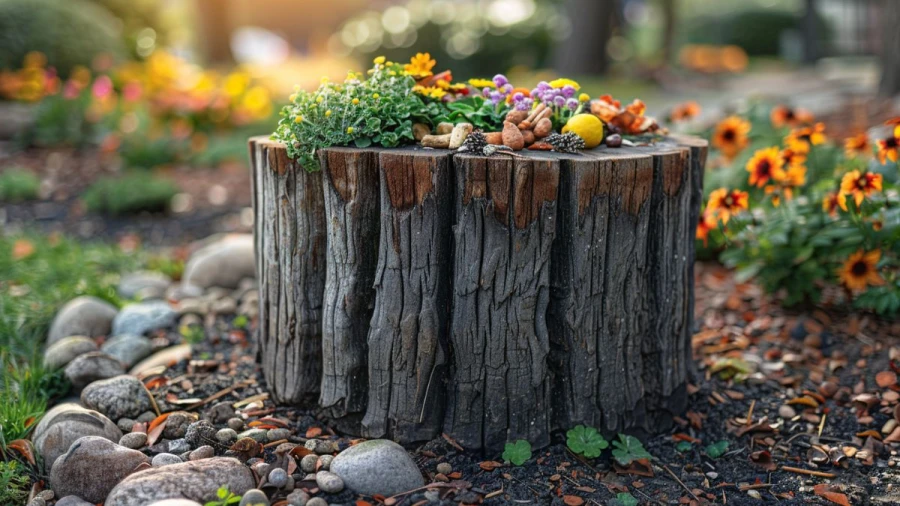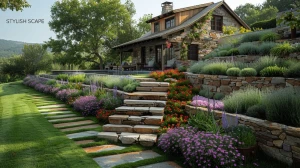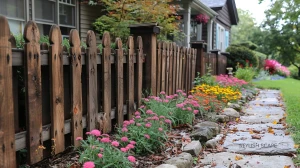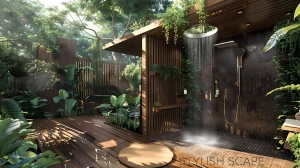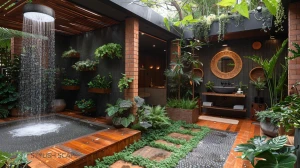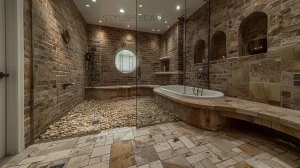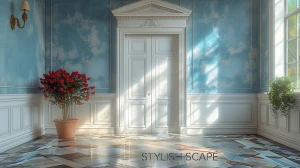
20 Creative and Practical Tree Stumps Ideas: Transform Your Garden and Home
Explore 20 innovative and artistic ways to repurpose tree stumps in your garden. From rustic planters to whimsical sculptures, find creative ideas to turn your tree stumps into eye-catching features that enhance your outdoor space.
by Maivizhi A
Updated Aug 12, 2024
On This Page
- Tree Stump Ideas
- Garden Planter Made from a Tree Stump
- Bird Bath Fashioned from a Tree Stump
- Outdoor Table Created With a Tree Stump
- Bench Crafted from a Tree Stump
- Stepping Stones Cut from a Tree Stump
- Fire Pit Surround Using a Tree Stump
- Stump Sculpture Carved from a Tree Stump
- Mushroom Garden Grown in a Tree Stump
- Birdhouse Mounted On a Tree Stump
- Tool Storage Within a Hollowed Tree Stump
- Garden Fountain Featuring a Tree Stump
- Treehouse Base Built on a Tree Stump
- Art Display Pedestal Made from a Tree Stump
- Planter Stand Using Different Tree Stumps
- Natural Seat Created from a Tree Stump
- Wildlife Shelter Designed With a Tree Stump
- Fairy Garden Setup On a Tree Stump
- Candle Holder Crafted from a Tree Stump
- Garden Marker Etched Into a Tree Stump
- Compost Bin Fashioned from a Tree Stump
- How Do you Treat a Tree Stump to Prevent it from Attracting Pests or Fungi?
Tree Stump Ideas
Tree stumps are often just thought of as leftover wood from cut-down trees, but they have a lot of creative possibilities. Instead of throwing them away, you can turn them into beautiful and useful items for your home or garden. Whether you’re interested in adding something special to your garden, starting a fun DIY project, or looking for unique home decor, tree stumps can be a great choice.
In the garden, you can make them into interesting planters, garden seats, or even cute fairy houses. Inside your home, you can use them to create unique furniture like side tables or stools that add a special touch to any room. Tree stumps can also be decorated with carvings or paint to become eye-catching art.
Using tree stumps in your projects is not only creative but also helps the environment by reusing what might otherwise be wasted. Explore the many ways you can turn tree stumps into something amazing and see how they can bring natural beauty and function to your space.
Also Read > Best 20 Kitchen Chimney Design Ideas To Attract Your Kitchen
Garden Planter Made from a Tree Stump
A garden planter made from a tree stump is a creative way to add charm to your garden. Start by choosing a sturdy, solid stump with a flat top. Remove any remaining bark and hollow out the center to create space for soil and plants. You can use a drill or carving tools for this. Once hollowed, line the inside with landscaping fabric to prevent soil from escaping.
Fill the cavity with potting soil and plant your favorite flowers, herbs, or succulents. To finish, you can add a coat of wood sealant to protect the stump from the elements. This planter not only adds a rustic touch to your garden but also provides a unique and eco-friendly option for growing plants.
Bird Bath Fashioned from a Tree Stump
Transforming a tree stump into a bird bath is a fantastic way to attract wildlife to your yard. Begin with a large, solid stump. Carve out a shallow basin on top where the birds can drink and bathe. The basin should be deep enough to hold water but shallow enough for the birds to stand comfortably. Smooth the inside of the basin to prevent injuries.
To keep the water clean, you might want to add a small solar-powered fountain or a water filter. Apply a weatherproof sealant to protect the wood and prevent it from rotting. This bird bath not only serves a practical purpose but also adds a natural, rustic element to your outdoor space.
Outdoor Table Created With a Tree Stump
Creating an outdoor table from a tree stump can bring a touch of natural elegance to your patio or garden. Start by selecting a stump with a flat, level surface and a sturdy base. Depending on the height you want, you may need to trim or shape the stump. For added stability, reinforce the base with additional wood or concrete if necessary.
Sand down the surface to smooth out rough edges and apply a weather-resistant sealant to protect against the elements. You can enhance the table's functionality by adding a glass top for a sleek finish or leaving the wood exposed for a more rustic look. This tree stump table not only serves as a practical piece of furniture but also showcases the natural beauty of wood, making it a striking addition to your outdoor decor.
Bench Crafted from a Tree Stump
Transforming a tree stump into a bench is a simple and rustic way to add seating to your garden or yard. Begin by selecting a sturdy, flat-topped stump that can support weight. Remove any rough bark or protruding branches to create a smooth surface. Sand the top and sides to make it comfortable to sit on. You can add a cushion or throw for extra comfort.
If the stump is tall, you may need to trim it to a suitable height for a bench. Optionally, seal the wood with a weather-resistant finish to protect it from the elements. This type of bench not only provides a natural look but also makes use of natural resources, blending seamlessly into outdoor settings.
Stepping Stones Cut from a Tree Stump
Using tree stumps as stepping stones is an innovative and eco-friendly way to create a path in your garden. Choose stumps that are flat and have a diameter that fits your design needs. Cut them into uniform slices, ensuring each slice is thick enough to support weight. Sand the edges and surfaces to remove splinters and make them safe to walk on.
Arrange the slices in a pattern or random layout along your desired path, embedding them slightly into the ground to keep them stable. This approach not only enhances the visual appeal of your garden but also provides a practical solution for walking paths.
Fire Pit Surround Using a Tree Stump
Creating a fire pit surround with tree stumps offers a rustic and charming touch to your outdoor fire area. Start by arranging several large stumps in a circle around your fire pit, leaving enough space for seating and safety. The stumps should be stable and level; if needed, trim or adjust them for stability.
Sand the tops and sides to remove any roughness and apply a weather-resistant sealant to protect them from fire and weather damage. The stumps can serve as natural seating or as decorative elements, adding a cozy and rustic feel to your fire pit area. This setup not only enhances the aesthetic of your outdoor space but also makes use of natural materials in a functional way.
Stump Sculpture Carved from a Tree Stump
A tree stump can be transformed into a unique sculpture through careful carving. The process begins by choosing a sturdy stump and sketching a design. Using carving tools, the artist shapes the wood, often creating intricate patterns or figures. The sculpture can range from abstract designs to realistic depictions of animals or mythical creatures.
Once the carving is complete, the sculpture can be sanded smooth and finished with a wood sealant to protect it from the elements. These carved stumps make eye-catching garden features or focal points in outdoor spaces, adding a touch of artistry and creativity to the landscape. Each piece is one-of-a-kind, reflecting the artist's skill and the natural beauty of the wood.
Mushroom Garden Grown in a Tree Stump
Creating a mushroom garden in a tree stump is a fascinating way to repurpose a natural element. Start by hollowing out the center of a sturdy stump, removing enough wood to make space for the mushroom spores or mycelium. Next, insert the mushroom spawn or plug directly into the hollowed area. The stump should be kept in a shaded, moist environment to encourage mushroom growth.
Over time, the mycelium will spread through the wood, eventually producing mushrooms. This method not only reuses the stump but also adds a natural, whimsical touch to your garden. As the mushrooms grow and mature, they create a living, organic garden feature that changes with the seasons.
Birdhouse Mounted On a Tree Stump
A birdhouse mounted on a tree stump provides a charming and functional addition to your garden. To start, select a tree stump that is stable and tall enough to keep the birdhouse safe from ground predators. Securely attach the birdhouse to the top of the stump using screws or brackets. Make sure the birdhouse is well-positioned, with a clear entrance for the birds to easily access it.
You can paint or decorate the birdhouse to match your garden's style. The stump provides a solid base and a natural look, blending seamlessly with the surroundings. This setup offers birds a safe and inviting nesting site, while also adding visual interest to your garden or yard.
Tool Storage Within a Hollowed Tree Stump
Transforming a tree stump into a tool storage solution is both practical and charming. Start by hollowing out the center of a sturdy, old tree stump, making sure the hollow space is big enough to fit your tools. You can use a chainsaw or an auger for this task. The stump’s natural wood texture gives it a rustic appeal, perfect for a garden or shed.
Once hollowed, line the inside with weather-resistant material to protect your tools from moisture. For added convenience, place a removable lid or cover on top to keep dust and rain out. This idea not only repurposes an old stump but also keeps your gardening tools neatly organized and easily accessible.
Garden Fountain Featuring a Tree Stump
A garden fountain built around a tree stump creates a stunning focal point in your outdoor space. Start by placing the stump in a designated spot in your garden. Carve or hollow out the top of the stump to create a basin where water will collect. Install a small pump inside the stump or at its base to circulate water.
Connect the pump to a water source, ensuring it flows from the top and cascades down the sides of the stump. Surround the base with decorative stones or plants to enhance the natural look. The sound of flowing water and the visual appeal of the tree stump add tranquility and beauty to your garden.
Treehouse Base Built on a Tree Stump
Building a treehouse on a tree stump creates a whimsical and sturdy base for a playful retreat. Choose a large, solid stump with a diameter that can support the weight of the treehouse. First, ensure the stump is level and stable; you might need to reinforce it with additional supports or concrete if necessary.
Construct a wooden platform or base on top of the stump, anchoring it securely. From this platform, you can build your treehouse with walls and a roof. Adding a ladder or stairs will make access easy. This setup provides a unique and sturdy foundation for your treehouse, blending seamlessly into a natural setting.
Art Display Pedestal Made from a Tree Stump
Transforming a tree stump into an art display pedestal adds a rustic charm to your space. Start by choosing a sturdy stump with a flat top and stable base. Sand the surface to smooth out rough spots and apply a wood sealant to protect it from moisture. The stump can be painted or left natural, depending on your preference. Place your chosen artwork, whether it’s a sculpture, vase, or framed picture, on top of the stump.
This unique pedestal not only showcases your art but also adds a touch of nature to your home or garden. It's an eye-catching way to display items, blending the organic beauty of the wood with your artistic pieces.
Planter Stand Using Different Tree Stumps
Create a unique and functional garden feature by using different tree stumps as planter stands. Select stumps of varying heights and sizes for a visually appealing arrangement. Remove the bark and smooth the surfaces, then seal them to protect against weather damage. Drill holes into the top of each stump to hold your plants or pots securely.
You can also hollow out some stumps to create natural planters. Arrange the stumps in your garden or patio, mixing and matching heights and sizes for a whimsical, forest-like effect. This method adds character and helps elevate your plants, making them a focal point in your outdoor space.
Natural Seat Created from a Tree Stump
Crafting a natural seat from a tree stump brings a rustic and eco-friendly touch to your outdoor seating. Choose a large, sturdy stump with a flat, stable top. Remove any rough edges and sand the surface to ensure comfort. Apply a weatherproof sealant to protect the wood from rain and sun damage.
The stump can serve as a casual seating option in your garden, backyard, or around a fire pit. You can add a cushion or a soft cover for extra comfort if desired. This simple project turns a natural material into a charming and functional piece of outdoor furniture.
Wildlife Shelter Designed With a Tree Stump
A wildlife shelter made from a tree stump is a creative and natural way to help local animals. Start by finding a large, hollow tree stump. If it’s not already hollow, you can carefully hollow it out using a chisel or drill. The shelter should have a small entrance hole, just big enough for animals like birds, insects, or small mammals to enter.
Place the stump in a quiet, shaded area of your garden, preferably near some vegetation or a water source. You can add some straw or dried leaves inside to provide warmth and comfort. This natural shelter provides a safe haven for wildlife, protecting them from harsh weather and predators. Plus, it adds a rustic and charming element to your garden.
Fairy Garden Setup On a Tree Stump
Creating a fairy garden on a tree stump turns an old stump into a magical miniature world. First, choose a tree stump that’s flat on top and free from rot. Clean the surface and paint it with a waterproof sealant to protect it from the elements. Next, arrange small plants like succulents or moss on top to create a lush landscape.
Add tiny fairy houses, miniature furniture, and little figurines to bring the garden to life. You can also include pebbles or small twigs to make pathways or fences. Finish by decorating with tiny lights or colorful stones for a touch of sparkle. This whimsical setup is a delightful way to reuse a tree stump and create a charming spot in your garden.
Candle Holder Crafted from a Tree Stump
A candle holder made from a tree stump adds a rustic touch to any room. Begin by selecting a small to medium-sized tree stump with a flat surface. Carefully cut the top of the stump to create a level area for the candle. Using a drill, make a hole in the center of the stump that’s slightly smaller than the diameter of the candle you plan to use.
You can choose a tea light, pillar candle, or even a small jar candle. Smooth the edges of the hole to ensure a good fit and prevent wax spills. Finish by sanding the exterior of the stump to remove rough patches and add a clear varnish for shine and protection. This handmade candle holder is both practical and stylish, adding a warm, natural glow to your space.
Garden Marker Etched Into a Tree Stump
A garden marker etched into a tree stump is a unique and charming way to label your plants. Instead of using plastic or metal signs, you can use a tree stump to create a natural and rustic marker. Simply take a small, flat tree stump and carve the names of your plants directly into the wood. You can use a knife or a carving tool for this.
To make the names stand out, you might want to paint them with weather-resistant paint or apply a wood stain. This not only helps you remember what you’ve planted but also adds a touch of nature to your garden. Over time, the wood will age and develop a patina, which can add even more character to your garden. This method is eco-friendly and blends beautifully with a natural garden setting.
Compost Bin Fashioned from a Tree Stump
A compost bin fashioned from a tree stump is a practical and eco-friendly way to manage your kitchen scraps and garden waste. Start by selecting a large, hollowed-out tree stump. If the stump is not already hollow, you may need to hollow it out using a chisel or an auger. Place the stump in a convenient spot in your garden.
The natural wood will allow for good airflow, which is essential for composting. Fill the stump with kitchen scraps like fruit and vegetable peels, coffee grounds, and garden waste such as leaves and grass clippings. Over time, microorganisms will break down the organic material into nutrient-rich compost. This method is not only sustainable but also aesthetically pleasing, adding a rustic touch to your garden while helping reduce waste and enrich your soil.
How Do you Treat a Tree Stump to Prevent it from Attracting Pests or Fungi?
Treating a tree stump to prevent pests and fungi involves a few key steps:
Remove Debris
- Clear away any debris, leaves, and loose bark from around the stump.
Treat the Stump
- Chemical Treatments: Apply a stump killer or herbicide specifically designed to prevent regrowth and decay. These products typically contain chemicals like glyphosate or triclopyr. Follow the manufacturer's instructions carefully.
- Boric Acid: Sprinkle boric acid on the stump to deter pests and fungi. It is a less toxic option compared to chemical stump killers.
Seal the Stump
- Sealant: Apply a tree sealant or paint over the stump. This creates a protective barrier that can help prevent pests and fungi from colonizing the stump. Use a sealant that’s designed for this purpose or even exterior latex paint.
Maintain Proper Drainage
- Ensure the area around the stump drains well to prevent excess moisture, which can encourage fungal growth.
Monitor and Inspect
- Regularly check the stump for signs of pest activity or fungal growth. If you notice any issues, treat them promptly.
By taking these steps, you can help prevent the stump from becoming a haven for pests and fungi.
